Related Research Articles

A circus is a company of performers who put on diverse entertainment shows that may include clowns, acrobats, trained animals, trapeze acts, musicians, dancers, hoopers, tightrope walkers, jugglers, magicians, ventriloquists, and unicyclists as well as other object manipulation and stunt-oriented artists. The term circus also describes the field of performance, training and community which has followed various formats through its 250-year modern history. Although not the inventor of the medium, Newcastle-under-Lyme born Philip Astley is credited as the father of the modern circus.

Philip Astley was an English equestrian, circus owner, and inventor, regarded as being the "father of the modern circus". Modern circus, as an integrated entertainment experience that includes music, domesticated animals, acrobats, and clowns, traces its heritage to Astley's Amphitheatre, a riding school that Astley founded in London following the success of trick-riding displays given by him and his wife Patty Jones in 1768. Astley's first competitor was equestrian Charles Hughes, who had previously worked with Astley. Together with Charles Dibdin, a famous author of pantomimes, Hughes opened a rival amphitheatre in London, which Dibdin called the Royal Circus and Equestrian Philharmonic Academy.

Giovanni Battista Belzoni, sometimes known as The Great Belzoni, was a prolific Italian explorer and pioneer archaeologist of Egyptian antiquities. He is known for his removal to England of the seven-tonne bust of Ramesses II, the clearing of sand from the entrance of the great temple at Abu Simbel, the discovery and documentation of the tomb of Seti I, including the sarcophagus of Seti I, and the first to penetrate into the Pyramid of Khafre, the second pyramid of the Giza complex.
Circus music is any sort of music that is played to accompany a circus, and also music written that emulates its general style. Popular music would also often get arranged for the circus band, as well as waltzes, foxtrots and other dances.
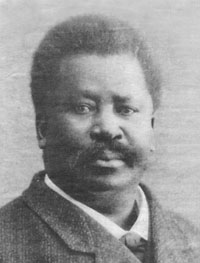
Pablo Fanque was a British equestrian performer and circus proprietor, becoming the first recorded Black circus owner in Britain. His circus was popular in Victorian Britain for 30 years, a period that is regarded as the golden age of the circus.
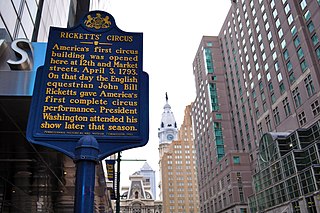
John Bill Ricketts (1769–1802) was an English equestrian who brought the first modern circus to the United States.

Hippodrama, horse drama, or equestrian drama is a genre of theatrical show blending circus horsemanship display with popular melodrama theatre.
'Lord' George Sanger was an English showman and circus proprietor. Born to a showman father, he grew up working in travelling peep shows. He successfully ran shows and circuses throughout much of the nineteenth century with his brother John. He retired in 1905 and was murdered by a disgruntled employee in 1911.

The Garrick Theatre was a theatre and music hall at 79–83 Castlereagh Street in Sydney from 1890 to 1929. The theatre was renamed the Tivoli Theatre in 1893 and operated as a popular vaudeville venue. It was destroyed by fire in 1899 and rebuilt. The theatre closed in 1929.
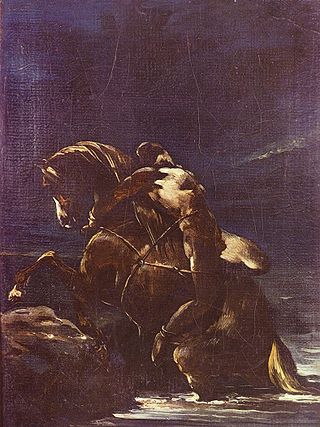
Ivan Mazepa (1639–1709) was a significant figure in the history of Ukraine. One story about him says that as a young man, he was caught in flagrante with a noblewoman, whose husband punished him by tying him naked to a wild horse and setting them free; eventually he reached the Cossacks and became their military leader. This legend caught the attention of the English poet Lord Byron, whose Mazeppa (1819) brought the events to wider attention. His narrative poem inspired many paintings, particularly by French Romantics, which in turn stimulated musical compositions, stage plays, more poems, and so on. New life was breathed into the equestrian tale when it was transposed to the American Wild West. With the independence of Ukraine in 1991, the figure of Mazepa is once again on the international stage.

Cooke's Royal Circus (1780–1912) started as a circus show travelling around Britain in the late 18th century. It was primarily an equestrian show with over half the acts involving horses.
Marie Elizabeth Macarte was an English equestrienne and circus performer who found success in Britain and the United States in the 1840s to 1860s.
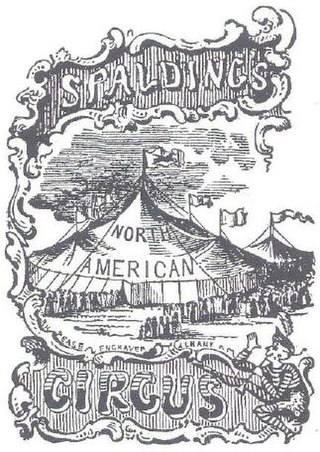
"Dr." Gilbert Reynolds Spalding, sometimes spelled Spaulding, was an American showman, circus owner and innovator, being the first to own his own showboat, constructed the first showboat to contain an entire circus and in 1856 the first to send an entire circus on tour in its own railroad cars.

Although street performances similar to circuses have existed in India since ancient times, a circus similar to the one described by Philip Astley, known as the father of the modern circus, as described in 1770, only existed in India in the 1880s.
George Benjamin William Lewis commonly referred to as G. B. W. Lewis, or G. B. Lewis, was an English circus performer, later a circus and theatre entrepreneur in Australia. He married in 1864 the actress and playwright Rose Edouin.
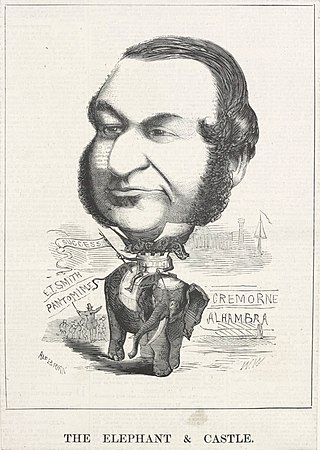
Edward Tyrrel Smith (1804–1877) was a versatile British entrepreneur and showman, best known as an opera and theatrical manager.
Giuseppe Antonio Truda was an Italian-born Australian composer.
Chiarini's Royal Italian Circus and Performing Animals, also known as Chiarini's Circus and Menagerie or simply the Royal Italian Circus was a renowned traveling circus company.
Giuseppe Chiarini may refer to:
References
- ↑ Dictionary of Sydney. (n.d.). Chiarini, Guiseppe. Retrieved May 27, 2024, from https://dictionaryofsydney.org/person/chiarini_guiseppe
- ↑ Champad, S. (2013). An album of Indian big tops : (history of Indian circus). Strategic Book Publishing and Rights Co.
- ↑ University of Sheffield Library Special Collections. (n.d.). "Astley's Royal Amphitheatre Programme, Monday 28 June 1852 and during the week". Retrieved May 27, 2024, from https://archives.sheffield.ac.uk/repositories/2/archival_objects/4634
- 1 2 "Chiarini's Circus. Auckland Star, (1872, November 9)". paperspast.natlib.govt.nz. Retrieved 2024-05-28.
- ↑ State Library of South Australia. "Tiger and Taxidermists". Retrieved May 27, 2024, from https://www.slsa.sa.gov.au/tiger-and-taxidermists
- ↑ "Chiarini, Guiseppe | State Library of New South Wales". dictionaryofsydney.org. Retrieved 2024-05-29.